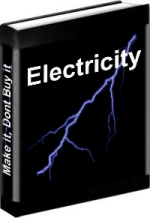 The cost of electricity is rising, taking up more and more of most people’s incomes. As that happens, interest in getting off the grid, ending dependence on grasping utilities, and making one’s own energy through one form or another of renewable power, is rising, too.
The cost of electricity is rising, taking up more and more of most people’s incomes. As that happens, interest in getting off the grid, ending dependence on grasping utilities, and making one’s own energy through one form or another of renewable power, is rising, too.
Not only does a home renewable power system make sense in terms of economics, but it also helps reduce a person’s environmental footprint and so constitutes a step towards a sustainable civilization. This gives it a moral imperative on top of mere dollars and cents.
Websites abound offering information about how to build and use a home renewable energy system. Most of these are about either solar power or wind power or both, those being the two most common and popular renewable energy forms.
But there’s a third form of renewable energy that is amenable to a decentralized, home-
How is biodiesel “renewable” energy, you may ask? Isn’t diesel oil a fossil fuel? And doesn’t burning biodiesel put greenhouse gases and other pollutants into the air?
Diesel oil is a fossil fuel, sure: a petroleum derivative. But it’s possible to make a fuel with the same properties from vegetable oil. Compared to real diesel oil, it’s not a great source of pollutants. Nor is it a net source of greenhouse gases. Yes, burning it releases carbon dioxide, but making it (or rather, growing the plants from which the vegetable oil is made that biodiesel is made from) takes the same carbon dioxide out of the air. So the net process doesn’t add any greenhouse gases at all.
The problem with fossil fuels is that they represent a straight line: greenhouse gases that they put into the air were taken out millions of years ago in the geological creation of oil, coal, and natural gas. For practical purposes, they might as well not have come out of the atmosphere at all. Biodiesel, on the other hand, represents a circle, because any greenhouse gases that it creates were made from carbon taken out of the atmosphere not that long ago.
The same e-
The Electricity Book also includes ways to use batteries for energy storage (a grid-
Finally, the e-
All of this is valuable advice, offered for the price of $29. The only real criticism I can offer is that the author seems to spend a lot of time and effort putting down other forms of renewable energy such as solar and wind; in fact, the cost of solar and wind power has dropped a lot over the years, and it’s quite possible to have a functioning and economically inexpensive solar or wind power system, so this seems to be unwarranted. However, there’s nothing wrong with biodiesel as a renewable energy source, and the Electricity Book presents information on it in useful form.
